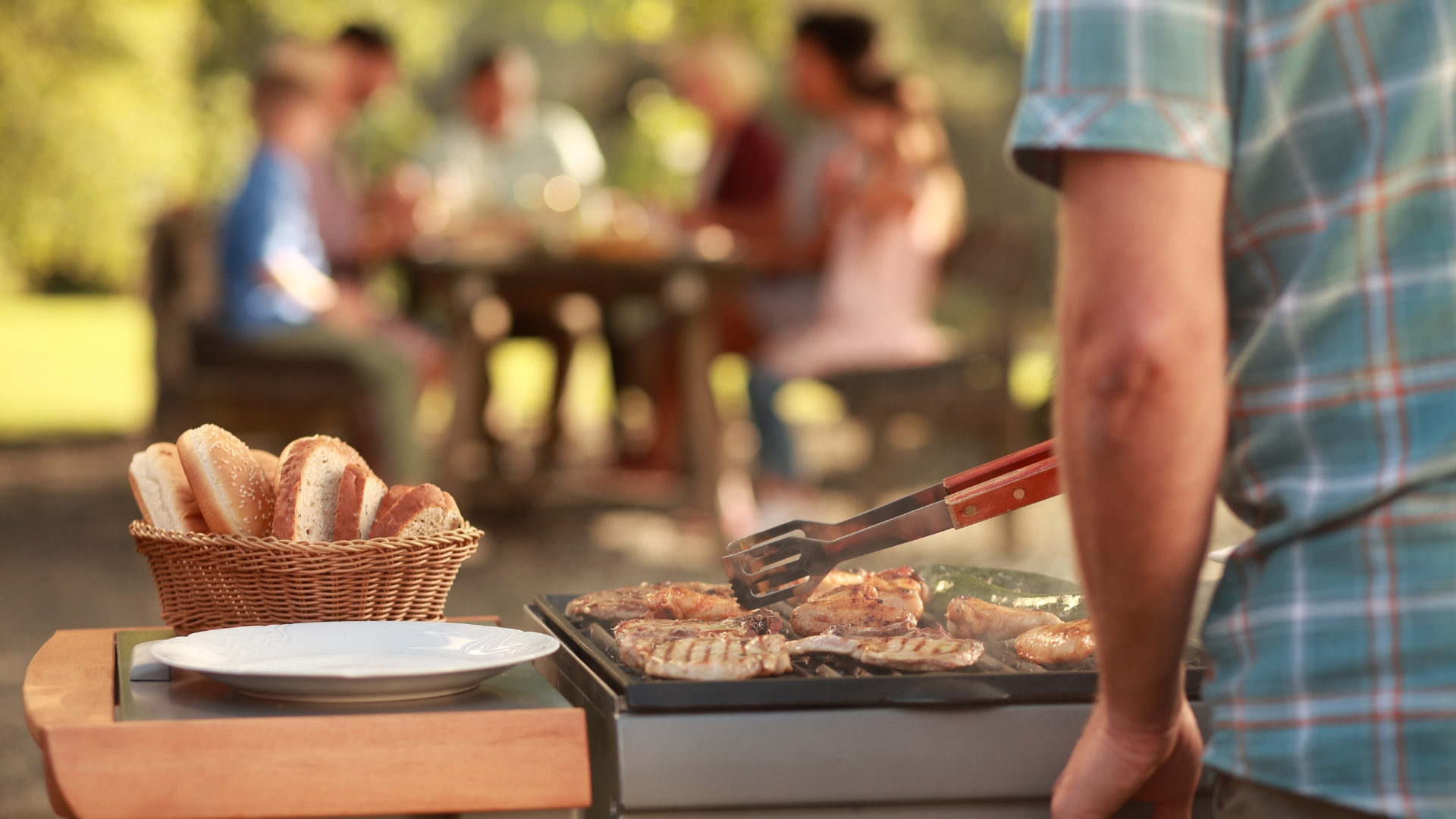Chilean red wine has become ever more popular in the past several decades. Read on to discover more about Chile as a winemaking country, Chilean red wine, and what grapes to be on the lookout for.
Once you’ve quenched your thirst with red Chilean wines, check out Best White Wines from Chile.
Chile can be considered the Bordeaux of South America, since its wine industry was very much influenced by the French. For a very long time, Chile was known as a source of inexpensive Cabernet Sauvignon and Bordeaux blends, a reputation that it has since successfully shed.
The first vine cuts were Criolla or País grapes, which are not French; these were brought over by Spanish monks to make sacramental wine, similar to what happened in California and Argentina. However, starting in the second half of the 19th century, Chilean producers who were impressed with Bordeaux Grand Crus started planting French varieties. Today, over 137,000 hectares are dedicated to wine production. Cabernet Sauvignon is the most important variety, followed by Merlot, Carménère, and Syrah.
Chileans have an appellation system based mostly on geography, but as with other New World wine producing countries, viticulture and winemaking are not as regulated as they are in Europe. Chilean wine growers are free to grow and plant what they want, and they do so according to demand and, of course, climate.
East or West, Chilean Wine Is Best
An astounding combination of multiple terroirs, topographies, expositions, and microclimates within Chile make the country optimal for viticulture. Chile is a very narrow strip that extends for 2,600 miles. The dry and hot Atacama Desert lies in the north, an area well-known for its production of Pisco. The west borders the cool Pacific Ocean and has the chain of mountains known as the Coastal Range, where altitudes reach up to 10,000 feet. And to the east, the Andes Mountains separate Chile from Argentina with altitudes of 13,000+ feet. In the middle, sandwiched between the Andes and the Pacific ocean, we find numerous valleys crossed by rivers that go east to west, from the Andes to the coast.
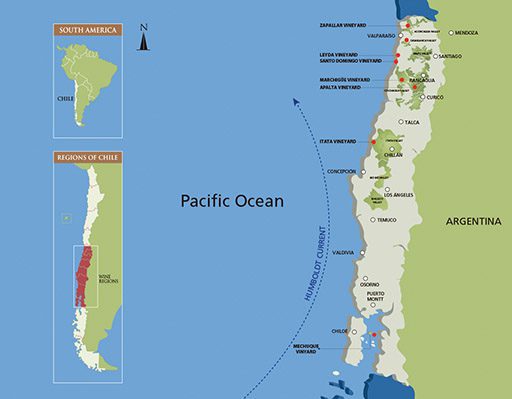
Climatically, the country can be divided into three zones:
- North – hot and dry
- Middle – Mediterranean
- South – cool and wet
Chilean producers, however, classify their wine regions from west to east. They are:
- Coastal, or Costa: This western-most side of the country is influenced by the cooling Humboldt current from the sea, bringing cold air, dry winds, and fog. This current provides ideal conditions for cool climate varieties such as Pinot Noir, Sauvignon Blanc, and Chardonnay.
- Between Mountain Ranges, or Entre Cordilleras: This central region consists of a second chain of mountains lower than the Andes and many flat valleys with altitudes between 300-800 m. This is where the most important red appellations are located, specifically in the Central Valley of Chile and south of Santiago. You will recognize these names from your labels: Maipo, Rapel Valley (includes Colchagua and Cachapoal), Curico, and Maule. The most important grape varieties here are Cabernet Sauvignon, Merlot, and Carménère.
- High, or Alto: The vineyards in this eastern-most region are affected by the alpine influence of the Andes.
On labels, usually categories 1 and 3 are indicated: for example, a wine will be labeled be a Colchagua Costa, (meaning influenced by the west) or a Maipo Alto, (meaning influenced by the Andes on the east). Wines made in the middle Entre Cordilleras region usually state this on the label.
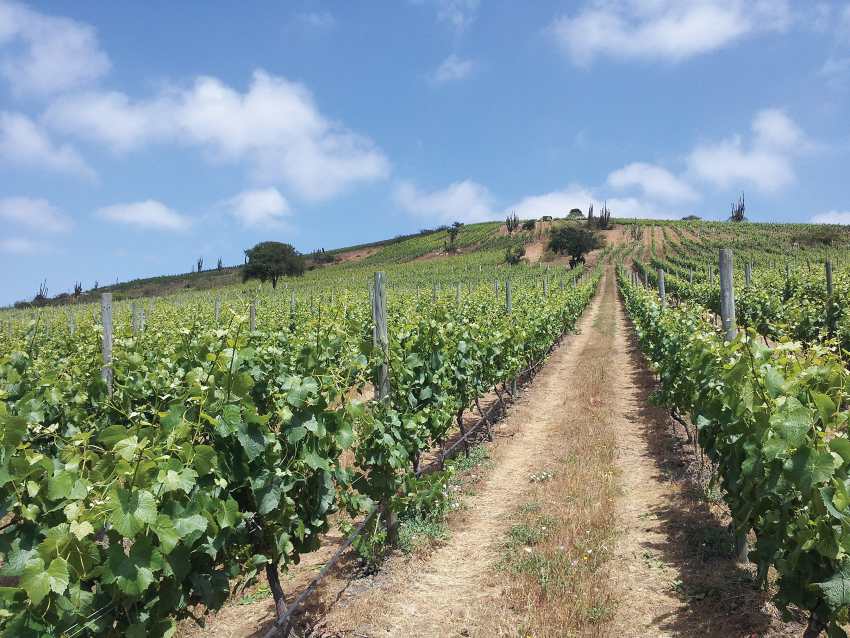
Chilean soils vary as much as the landscape. In the Aconcagua region in the north, they are mostly alluvial (sedimentary), the Maipo and Rapel Valleys are mostly loam, clay, and sand, and in the South in Maule and Bio Bio, volcanic. Besides this, Chile is also phylloxera free, meaning the deadly louse never arrived in Chile: it is the only country in the world to keep their original vinifera roots. They do, however, have other challenges such as downy and powdery mildew and nematodes, but the widely-practiced organic and sustainable viticulture helps to combat this. In recent years, drought has become a problem, especially in the north and center, but irrigation is allowed, and usually comes from melted snow from the Andes.
What to Expect from Chilean Red Wines
Roughly 65% of the total production is dedicated to making red wines, especially from Cabernet Sauvignon, Merlot, Bordeaux blends, and Carménère. Interesting aside about Carménère: in Chile, winemakers originally identified it as a late ripening Merlot, until ampelographer Jean Michel Boursiquot’s research proved otherwise.
Starting in the late 80’s, Chile saw a change in quality in its wines, thanks in part to investments in vineyards and wineries. Domestic producers, on their own or in joint ventures with foreign wine producers, worked together to prove that Chile could produce more than $10 wines (I’m sure some of you are familiar with Gato Negro).
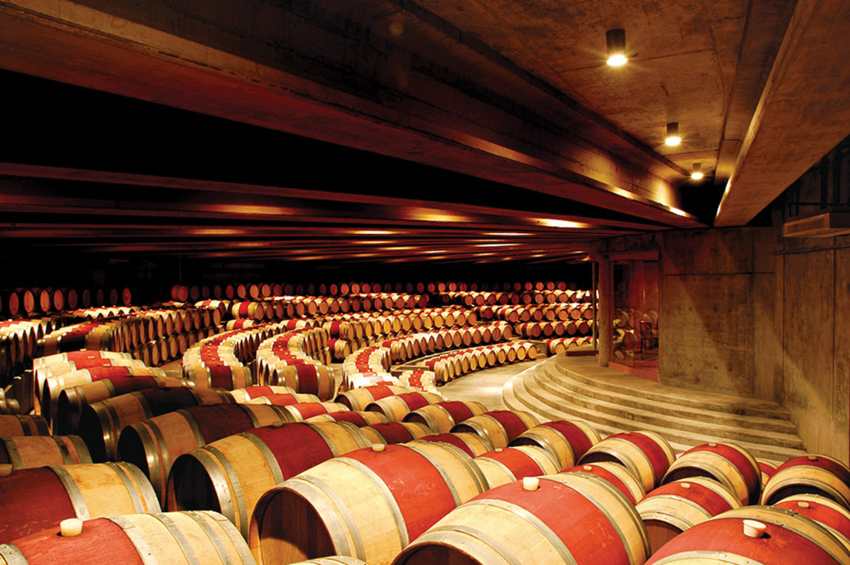
Chilean Red Wine Regions
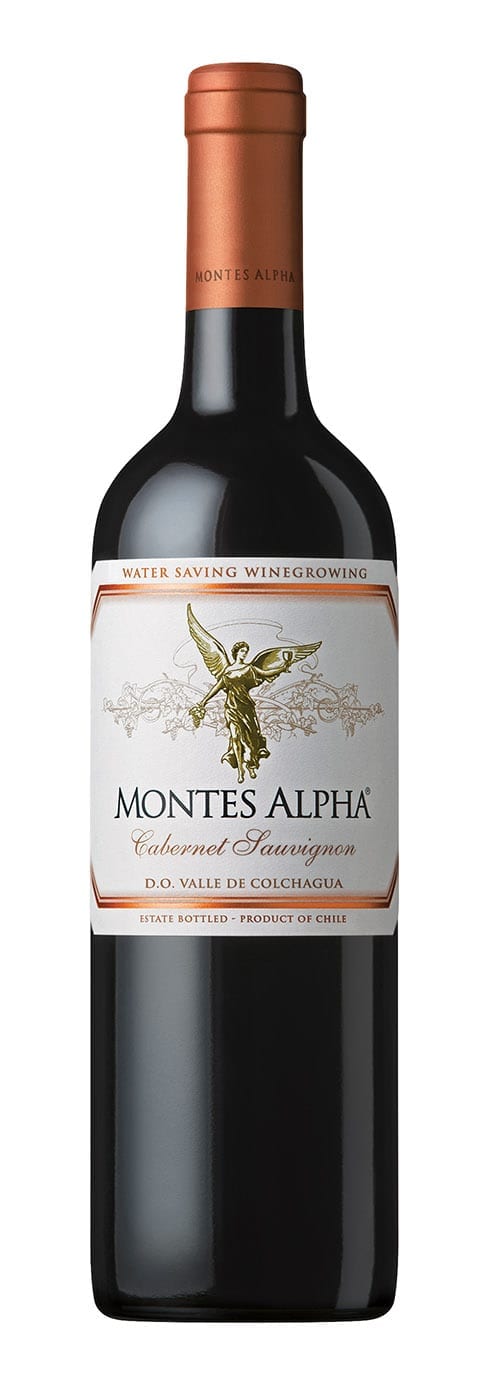 If you are looking for Chilean red wine, know that although producers are spread all over the country, most of them are concentrated in the middle Central Valley. However, in the north, there are important appellations that produce very good red wines, like the wonderful and elegant Syrahs from Elqui and Limari Valleys featuring peppery and ripe black fruit aromas or Cabernet Sauvignon, Carménère, and Bordeaux blends from the Aconcagua Valley.
If you are looking for Chilean red wine, know that although producers are spread all over the country, most of them are concentrated in the middle Central Valley. However, in the north, there are important appellations that produce very good red wines, like the wonderful and elegant Syrahs from Elqui and Limari Valleys featuring peppery and ripe black fruit aromas or Cabernet Sauvignon, Carménère, and Bordeaux blends from the Aconcagua Valley.
Carménère is Chile’s signature red grape variety, producing savory and spicy reds with lush and textured bodies, balanced acidity, and velvety tannins. Important enclaves to look for are Peuno, Alto Cachapoal, and Apalta.
Cabernet Sauvignon, the most popular red grape, produces wines that show medium to big body with balanced alcohol and acidity and muscular tannins. They show notes of black currant, mint and olives notes. Puente Alto, Pirque, and Alto Maipo produce some of the best examples. Look for Colchagua on labels, as well. One great example is Montes Alpha Cabernet Sauvignon, which has complex notes of crème de cassis, tobacco, and black pepper against a backdrop of toast and pastry notes.
I also recommend you to try the wines from the Vigno appellation. This appellation is located in the Secano area of Maule. Here impressive, concentrated reds are made from dry farmed Carignan vines that are also some of the oldest in Chile (30 years+).



